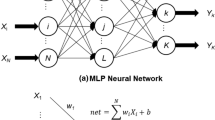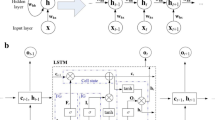Abstract
Global climate change and human activities aggravate the frequency of flood disasters. Flood risk includes natural flood risk and risk of economic and social disasters, which is displayed intuitively by flood risk zonation maps. In this paper, we take the disaster-causing factors, the disaster environment, the disaster-bearing body, and the disaster prevention and mitigation capability into consideration comprehensively. Eleven influencing indexes including annual maximum 3-day rainfall and rainfall in flood season are selected, and the virtual sown area of crops is innovated. Taking the Huaihe River Basin (HRB) as the research area, the flood risk prediction of the basin is explored by using the long short-term memory (LSTM). The results show that LSTM can be successfully applied to flood risk prediction. The short-term prediction results of the model are good, and the area where the risk is seriously underestimated (the high and very high risk are identified as the very low risk) accounts for only 0.98% of the total basin on average. The prediction results can be used as a reference for watershed management organizations, so as to guide future flood disaster prevention.












Similar content being viewed by others
References
Apel, H., Thieken, A. H., Merz, B., & Blöschl, G. (2004). Flood risk assessment and associated uncertainty. Natural Hazards and Earth System Science, 4(2), 295–308.
Badrzadeh, H., Sarukkalige, R., & Jayawardena, A. W. (2015). Hourly runoff forecasting for flood risk management: application of various computational intelligence models. Journal of Hydrology, 529, 1633–1643.
Bonn, F., & Dixon, R. (2005). Monitoring flood extent and forecasting excess runoff risk with RADARSAT-1 data. Natural Hazards, 35(3), 377–393.
Box, G. E., & Jenkins, G. M. (1976). Time series analysis: forecasting and control San Francisco. Calif: Holden-Day.
Budiyono, Y., Aerts, J., Brinkman, J., Marfai, M. A., & Ward, P. (2015). Flood risk assessment for delta mega-cities: a case study of Jakarta. Natural Hazards, 75(1), 389–413.
Castillo-Rodriguez, J. T., Escuder-Bueno, I., Altarejos-Garcia, L., & Serrano-Lombillo, A. J. (2014). The value of integrating information from multiple hazards for flood risk analysis and management. Natural Hazards and Earth System Sciences, 14, 379–400.
Chen, S. Y., & Guo, Y. (2006). Variable fuzzy sets and its application in comprehensive risk evaluation for flood-control engineering system. Fuzzy Optimization and Decision Making, 5(2), 153–162.
Chen, S., Luo, Z. K., & Pan, X. B. (2013). Natural disasters in China: 1900-2011. Natural Hazards, 69(3), 1597–1605.
Deng, W. P. (2013). Research on flood disaster comprehensive evaluation model based on intelligent algorithm. Huazhong University of Science and Technology (in Chinese).
Diakoulaki, D., Mavrotas, G., & Papayannakis, L. (1995). Determining objective weights in multiple criteria problems: the critic method. Computers & Operations Research, 22(7), 763–770.
Fischer, T., & Krauss, C. (2018). Deep learning with long short-term memory networks for financial market predictions. European Journal of Operational Research, 270(2), 654–669.
Foudi, S., Osés-Eraso, N., & Tamayo, I. (2015). Integrated spatial flood risk assessment: the case of Zaragoza. Land Use Policy, 42, 278–292.
Graves, A., & Schmidhuber, J. (2005). Framewise phoneme classification with bidirectional LSTM and other neural network architectures. Neural Networks, 18(5–6), 602–610.
Hall, J. W., Sayers, P. B., & Dawson, R. J. (2005). National-scale assessment of current and future flood risk in England and Wales. Natural Hazards, 36(1–2), 147–164.
Hochreiter, S., & Schmidhuber, J. (1997). Long short-term memory. Neural Computation, 9(8), 1735–1780.
Holmes, E. E., Lewis, M. A., Banks, J. E., & Veit, R. R. (1994). Partial differential equations in ecology: spatial interactions and population dynamics. Ecology, 75(1), 17–29.
Huang, Z. W., Zhou, J. Z., Song, L. X., Lu, Y. L., & Zhang, Y. C. (2010). Flood disaster loss comprehensive evaluation model based on optimization support vector machine. Expert Systems with Applications, 37(5), 3810–3814.
Jiang, B. (2013). Head/tail breaks: a new classification scheme for data with a heavy-tailed distribution. The Professional Geographer, 65(3), 482–494.
Khosravi, K., Pourghasemi, H. R., Chapi, K., & Bahri, M. (2016). Flash flood susceptibility analysis and its mapping using different bivariate models in Iran: a comparison between Shannon’s entropy, statistical index, and weighting factor models. Environmental Monitoring and Assessment, 188(656), 656.
Kubal, C., Haase, D., Meyer, V., & Scheuer, S. (2009). Integrated urban flood risk assessment - adapting a multicriteria approach to a city. Natural Hazards & Earth System Sciences, 9(6), 1881–1895.
Lai, C. G., Wang, Z. L., & Song, H. J. (2011). Flood risk assessment of Beijiang River basin based on BP neural network. Hydropower Energy Science, 29(3), 57–59 (in Chinese).
Lai, C. G., Chen, X. H., Chen, X. Y., Wang, Z. L., Wu, X. S., & Zhao, S. W. (2015). A fuzzy comprehensive evaluation model for flood risk based on the combination weight of game theory. Natural Hazards, 77(2), 1243–1259.
Li, L. F., Wang, J. F., Leung, H. T., & Jiang, C. S. (2010). Assessment of catastrophic risk using Bayesian network constructed from domain knowledge and spatial data. Risk Analysis, 30(7), 1157–1175.
Li, G. F., Xiang, X. Y., Tong, Y. Y., & Wang, H. M. (2013). Impact assessment of urbanization on flood risk in the Yangtze River Delta. Stochastic Environmental Research and Risk Assessment, 27(7), 1683–1693.
Liu, J. F., Li, J., Liu, J., & Cao, R. Y. (2008). Integrated GIS/AHP-based flood risk assessment: a case study of Huaihe River Basin in China. Journal of Natural Disasters, 17(6), 110–114 (in Chinese).
Liu, J., Jiang, W. G., Du, P. J., Sheng, S. X., Liu, J. F., & Cao, R. Y. (2009). Rainstorm risk assessment of Huaihe River based on correlation analysis. Journal of China University of Mining and Technology, 38(5), 735–740 (in Chinese).
Lu, G. Y., & Wong, D. W. (2008). An adaptive inverse-distance weighting spatial interpolation technique. Computers & Geosciences, 34(9), 1044–1055.
Lyu, H. M., Sun, W. J., Shen, S. L., & Arulrajah, A. (2018). Flood risk assessment in metro systems of mega-cities using a GIS-based modeling approach. Science of the Total Environment, 626, 1012–1025.
Myerson, R. B. (2013). Game theory. Harvard University Press.
Ouma, Y. O., & Tateishi, R. (2014). Urban flood vulnerability and risk mapping using integrated multi-parametric AHP and GIS: methodological overview and case study assessment. Water, 6(6), 1515–1545.
Peng, S. H. (2018). Preparation of a flood-risk environmental index: case study of eight townships in Changhua County, Taiwan. Environmental Monitoring and Assessment, 190(174), 174.
Sheather, S. J., & Jones, M. C. (1991). A reliable data-based bandwidth selection method for kernel density estimation. Journal of the Royal Statistical Society: Series B (Methodological), 53(3), 683–690.
Sheng, S. X., Shi, L., Liu, J. F., Ye, J. Y., & Liu, J. (2010). Risk assessment of heavy rain and flood in the depression area along the Huaihe river. Geographical Research, 29(03), 416–422 (in Chinese).
Tingsanchali, T., & Karim, F. (2010). Flood-hazard assessment and risk-based zoning of a tropical flood plain: case study of the Yom River, Thailand. International Association of Scientific Hydrology Bulletin, 55(2), 145–161.
Wang, Z. L., Chen, X. H., Lai, C. G., & Zhao, S. W. (2013). Flood risk assessment model based on particle swarm rule mining algorithm. System Engineering Theory and Practice, 33(6), 1615–1621 (in Chinese).
Wang, Z. L., Lai, C. G., Chen, X. H., Yang, B., Zhao, S. W., & Bai, X. Y. (2015). Flood hazard risk assessment model based on random forest. Journal of Hydrology, 527, 1130–1141.
Wu, Y. N., Zhong, P. A., Zhang, Y., Xu, B., Ma, B., & Yan, K. (2015). Integrated flood risk assessment and zonation method: a case study in Huaihe River basin, China. Natural Hazards, 78(1), 635–651.
Wu, Y. N., Zhong, P. A., Xu, B., Zhu, F. L., & Ma, B. (2017). Changing of flood risk due to climate and development in Huaihe River basin, China. Stochastic Environmental Research and Risk Assessment, 31(4), 935–948.
Xiao, Y. F., Yi, S. Z., & Tang, Z. Q. (2017). Integrated flood hazard assessment based on spatial ordered weighted averaging method considering spatial heterogeneity of risk preference. Science of the Total Environment, 599-600, 1034–1046.
Yang, H., & Li, C. Y. (2003). The relation between atmospheric intraseasonal oscillation and summer severe flood and drought in the Changjiang-Huaihe River basin. Advances in Atmospheric Sciences, 20(4), 540–553.
Yang, C. G., Yu, Z. B., Hao, Z. C., Zhang, J. Y., & Zhu, J. T. (2012). Impact of climate change on flood and drought events in Huaihe River Basin, China. Hydrology Research, 43(1–2), 14–22.
Yin, J., Ye, M. W., Yin, Z., & Xu, S. Y. (2015). A review of advances in urban flood risk analysis over China. Stochastic Environmental Research and Risk Assessment, 29(3), 1063–1070.
Zhang, Y. J., & Zhang, X. (2007). Grey correlation analysis between strength of slag cement and particle fractions of slag powder. Cement and Concrete Composites, 29(6), 498–504.
Zhang, Z. T., Gao, C., Liu, Q., Zhai, J. Q., Wang, Y. J., Su, B. D., & Tian, H. (2014). Risk assessment of storm floods and floods in the Huaihe river basin in different return periods. Geographical Research, 33(07), 1361–1372 (in Chinese).
Zhou, Q., Mikkelsen, P. S., Halsnæs, K., & Arnbjerg-Nielsen, K. (2012). Framework for economic pluvial flood risk assessment considering climate change effects and adaptation benefits. Journal of Hydrology, 414-415, 539–549.
Zou, Q., Zhou, J. Z., Zhou, C., Song, L. X., & Guo, J. (2013). Comprehensive flood risk assessment based on set pair analysis-variable fuzzy sets model and fuzzy AHP. Stochastic Environmental Research and Risk Assessment, 27(2), 525–546.
Acknowledgements
This work was supported by the National Key R&D Program of China(Grant No. 2017YFC0405606), the National Natural Science Foundation of China(Grant No. 51579068), the Foundamental Research Funds for the Central Universities(Grant No. 2018B10514, 2018B18214, 2018B606X14, and 2019B72414), the Postgraduate Research & Practice Innovation Program of Jiangsu Province (Grant Nos. SJKY19_0468 and KYCX18_0578), the National Natural Science Foundation of Jiangsu Province, China(Grant No. BK20180509), the China Postdoctoral Science Foundation (Grant No. 2017M621612, 2018T110525, 2019M661715), and the National Natural Science Foundation of China(Grant No. 51579068, 51609062, 51909062).
Author information
Authors and Affiliations
Corresponding author
Additional information
Publisher’s note
Springer Nature remains neutral with regard to jurisdictional claims in published maps and institutional affiliations.
Rights and permissions
About this article
Cite this article
Yang, M., Zhong, Pa., Li, J. et al. Research on intelligent prediction and zonation of basin-scale flood risk based on LSTM method. Environ Monit Assess 192, 387 (2020). https://doi.org/10.1007/s10661-020-08351-w
Received:
Accepted:
Published:
DOI: https://doi.org/10.1007/s10661-020-08351-w




